Unlock the power of audience segmentation in marketing. Explore strategies, examples, and tips to create targeted campaigns that resonate with segmented audiences.
February 29, 2024
Audience Segmentation Essentials: Marketing Strategies & Examples
Question
Answer
Pick one KPI to improve and start segmentation with the customer data you already have, build a small set of segments, then validate results with A/B testing and expand as you collect richer data.
Standing out and effectively reaching your target audience requires more than just high frequency, unpersonalized bulk campaigns. With segmented communication leading to an increase in revenue of up to 760% according to a recent study, it’s clear that there is a lot of value for customers and businesses alike when it comes to truly personalized marketing. One of the most straightforward yet comprehensive and effective ways to achieve this is through audience segmentation.
Whether you’re new to the concept or looking to refine your existing strategies, this guide will equip you with the knowledge and tools to better understand segmentation and engage your target audience.
What is Audience Segmentation?
A simple definition of audience segmentation is the strategic process of dividing a customer base into distinct groups, each characterized by specific attributes such as gender, location, campaign engagement, number of purchases, or total amount spent. For instance, segmentation can identify customers who have spent more than $1000 in a store, allowing the business to send them exclusive marketing campaigns for loyal customers. This strategy enables companies to fine-tune marketing efforts, ensuring that they are reaching out to different segments of their audience in the most targeted and effective way possible. By focusing on the unique preferences and behaviors of these groups, businesses can enhance metrics such as engagement and conversion rates, ultimately leading to more revenue.
Why is Audience Segmentation Important?
Audience segmentation brings a multitude of benefits to your marketing strategy, allowing for more efficient and effective communication. Here are some reasons why it's crucial:
1. Reduces Communication Costs
Direct communication, such as SMS alerts, can become costly when targeting a broad audience. For example, if an SMS campaign costs $0.05 per message and you’re targeting 100,000 customers, the total cost would be $5,000. By applying segmentation, you can specifically target customers who have not yet redeemed a promo code you sent them via email. This targeted approach reduces the volume of SMS messages sent, substantially cutting down costs. For instance, if segmentation allows you to narrow your target audience to 20,000 customers instead of 100,000, you would only spend $1,000, thereby saving $4,000 while still reaching those most likely to convert. This method ensures that your marketing budget is spent more judiciously, maximizing the return on investment.
For instance, one of Maestra’s clients, PuffCuff, saved on marketing costs by utilizing “cascading” communication flows, in which more costly SMS campaigns are only sent to customers who did not open the initial email campaign.
2. Decreases Pressure on Profit Margins
Universal discounts can dilute profit margins unnecessarily. By offering discounts selectively, companies ensure they’re only given to segments where price sensitivity is a key factor in the purchasing decision. This approach allows for maintaining healthier margins while still driving sales.
For instance, Synergetic, a home care product manufacturer, moved from blanket promotional emails to segmented campaigns based on loyalty program status, engagement, and purchase behavior. They offered loyalty points instead of discounts, helping preserve profit margins while testing different promotional strategies.
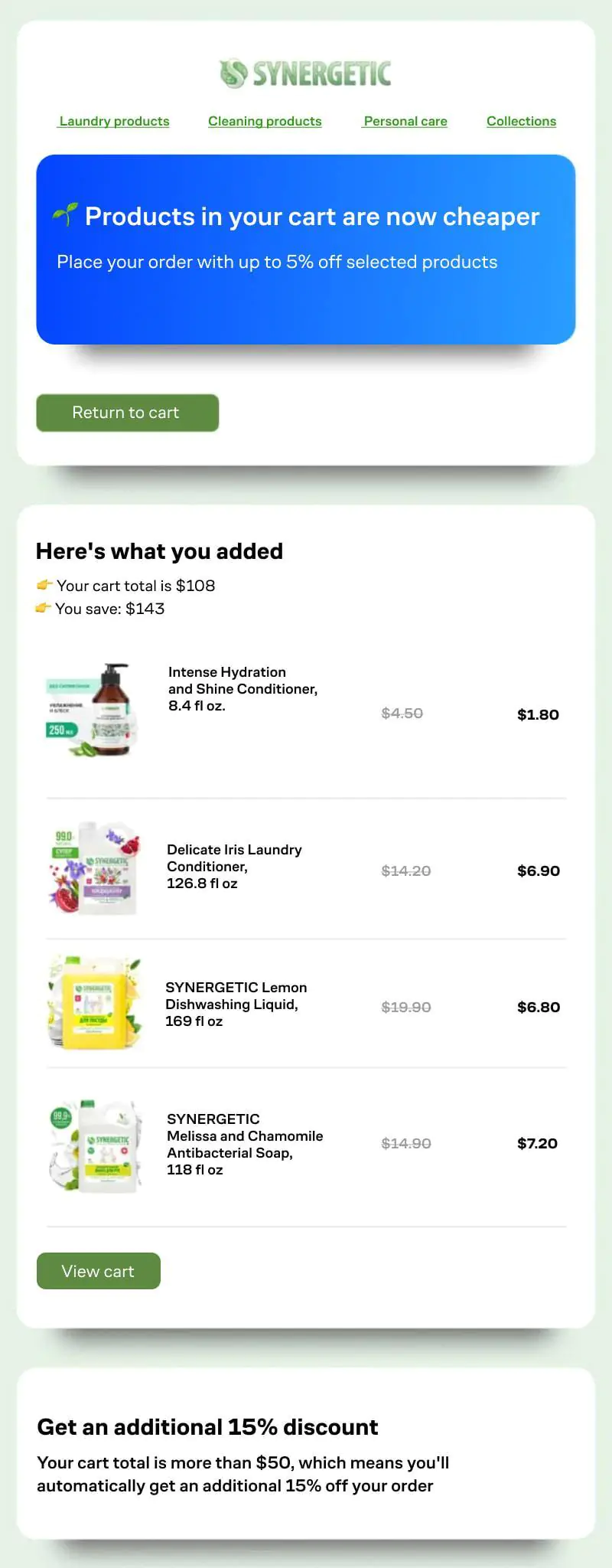
Instead of sending out bulk campaigns across their entire audience, Synergetic uses a more precise approach by analyzing data on customer behavior (such as abandoned carts) and awarding specific segments with bonus points to incentivize them to complete their purchase
3. Enables Cross-Channel Campaigns
Different customer segments may prefer different communication channels. Segmentation enables businesses to tailor their approach, engaging each segment through their preferred medium.
One of Maestra’s clients, a home goods chain, found that younger customers preferred digital communications, while older demographics responded better to SMS campaigns. By segmenting their audience accordingly, they could allocate their marketing budget more efficiently, ensuring messages were both cost-effective and impactful.
4. Increases the Effectiveness of Automated Campaigns
Segmentation can significantly enhance the performance of automated marketing campaigns. By categorizing customers based on specific criteria, such as the value of items in their abandoned carts, retailers can customize their outreach with discounts and incentives uniquely tailored to each segment. This targeted approach not only captures the customer’s attention more effectively but also significantly increases the likelihood of converting abandoned carts into completed purchases.
Consider the optimization of performance metrics when comparing generic email campaigns and those that are segmented: according to Hubspot’s research, segmented campaigns result in 30% more opens and 50% more clickthroughs than unsegmented ones.
5. Enhances Customer Loyalty
Personalization plays a significant role in enhancing customer loyalty, demonstrating that a brand values and understands its customers. By segmenting audiences based on specific interests or behaviors, businesses can customize their messaging, making each communication feel more personal and relevant. Whether it’s offering specialized content or exclusive discounts, segmentation ensures that customers receive messages that resonate with their preferences, fostering a stronger connection to the brand.
Flower delivery service, Blossom Flower, uses segmentation for bulk holiday campaigns, taking each customer’s behavior into account. This includes details such as the date of their last purchase, order satisfaction ratings, email marketing activity, and the occasions they usually purchase flowers for.
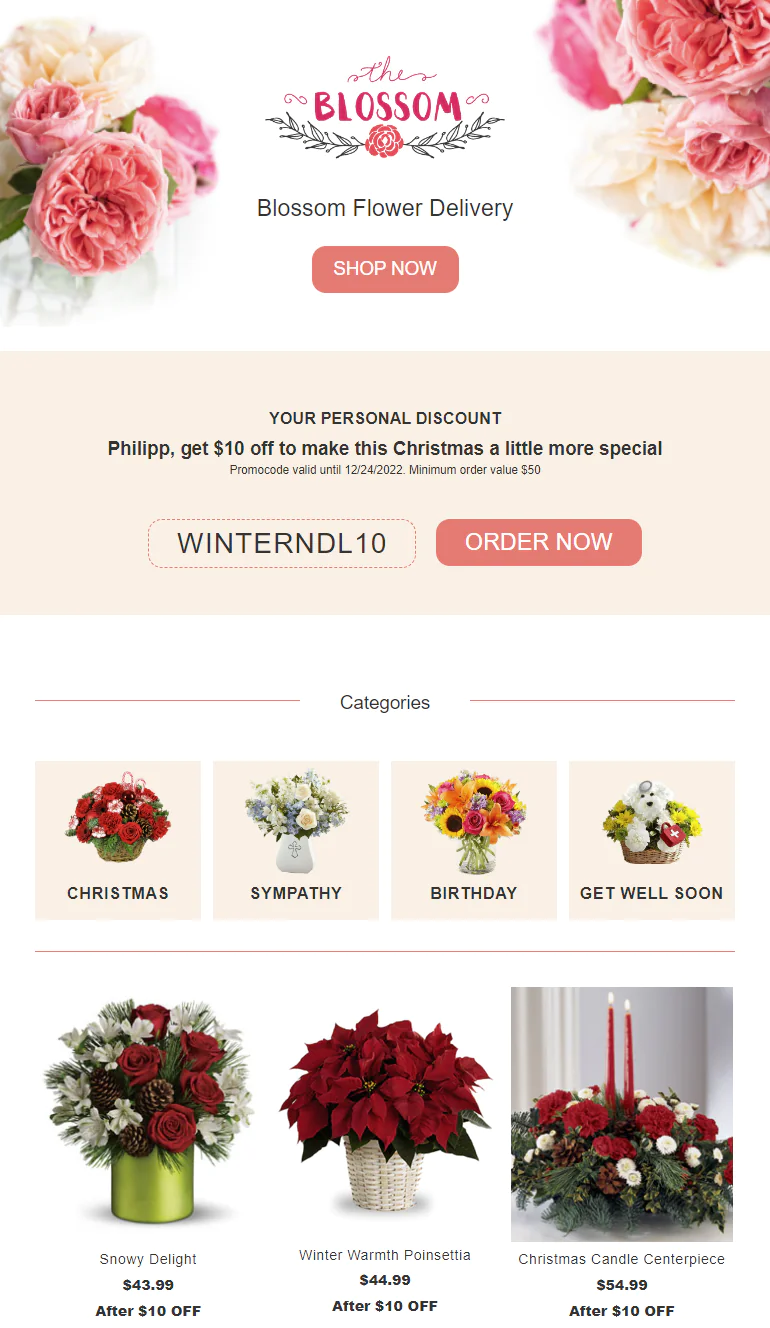
Christmas campaign from Blossom Flower Delivery
Here is an example of one of the brand’s segments:
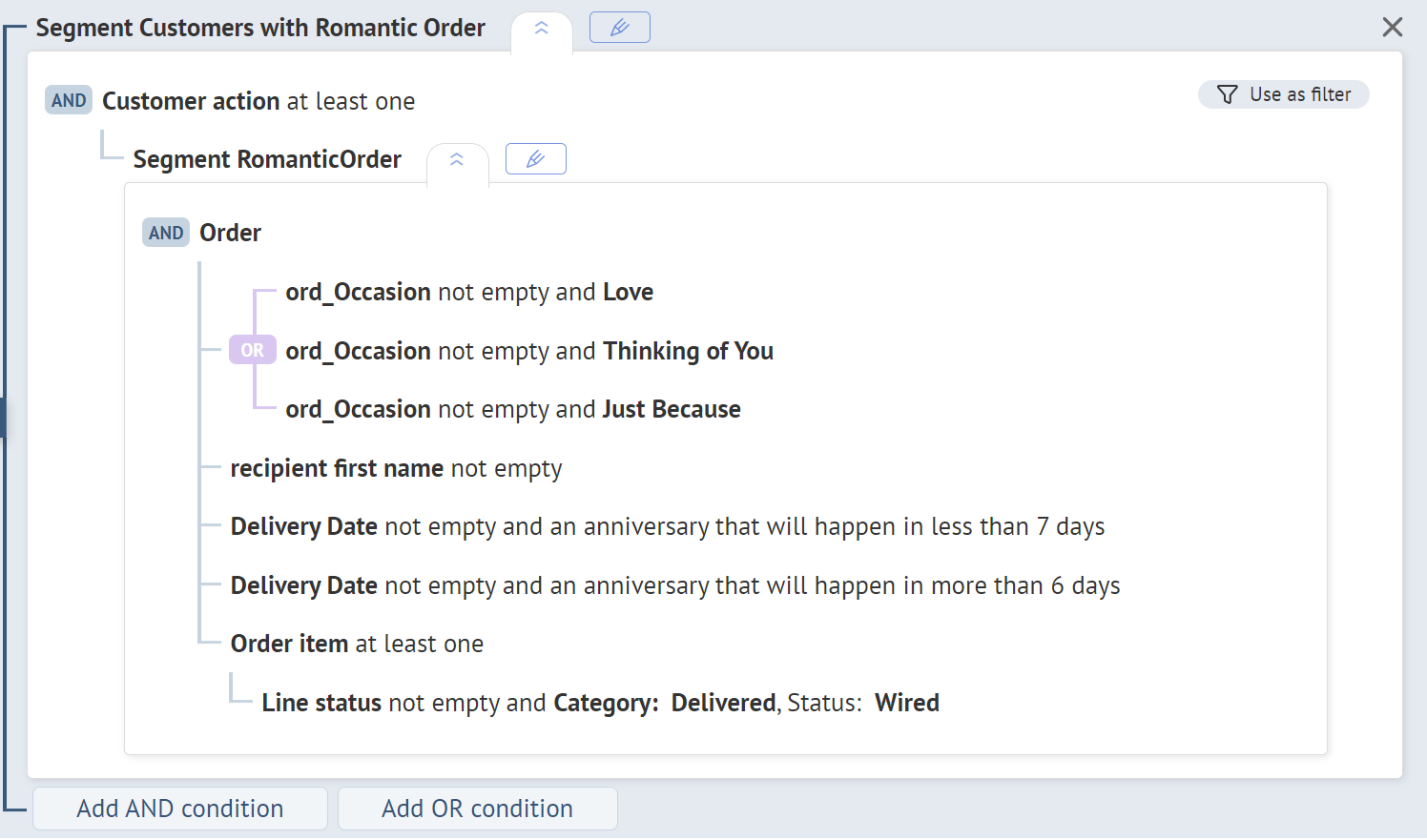
This segment uses purchase history data and includes customers that placed a “Just Because”, “Love”, or “Thinking of You” order a year ago
6. Allows for Customized Email Frequency According to Customer Activity
Understanding and respecting each customer’s preferred frequency of communication is crucial in maintaining engagement. Through segmentation, companies can adjust the frequency of their messages to match the preferences of different groups, reducing the risk of disengagement or annoyance. By tracking when (i.e., what days and at what time) each customer is most receptive to emails using open and click rates, brands can ensure that messages are anticipated and welcomed, rather than seen as intrusive or overwhelming.
One of Maestra’s clients in the real estate sector closely monitors campaign engagement metrics to manage communication frequency. Customers who open email campaigns frequently receive the brand’s regular digest on Fridays. However, those with decreased engagement rates are sent campaigns less frequently — with the communication gap increasing from once every two weeks to once a month or longer.
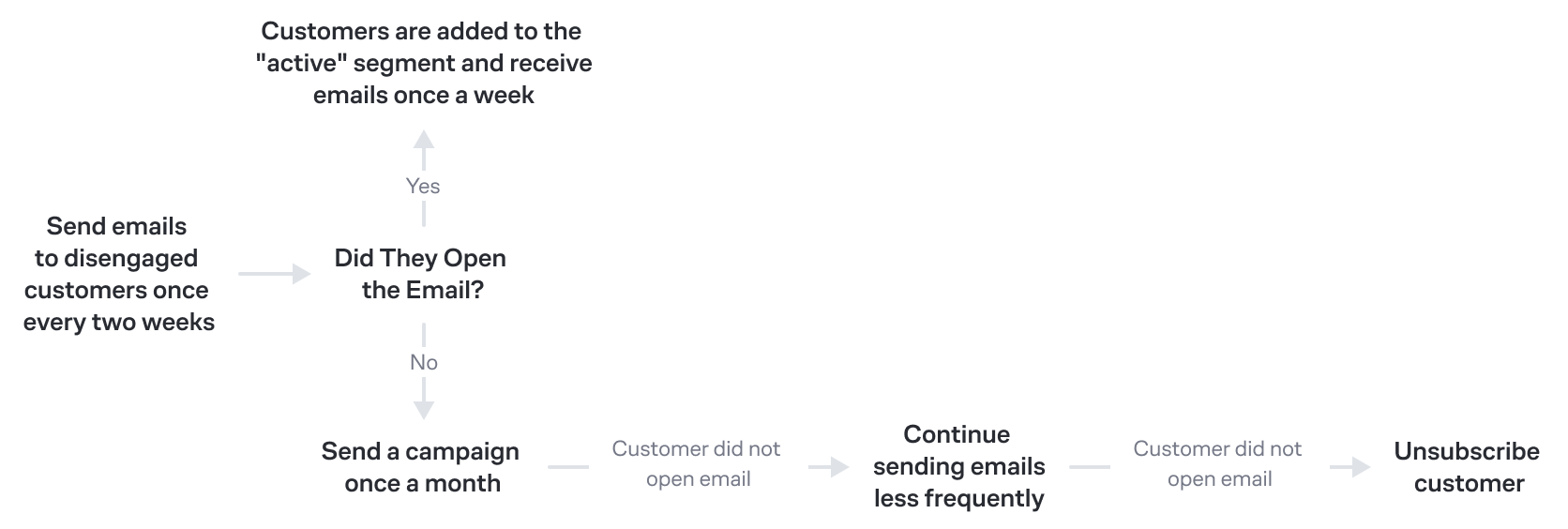
An example of a marketing flow from one of Maestra’s clients, where campaign frequency is reduced until the customer starts engaging with the emails or until it’s time to unsubscribe them
What Can Happen Without Audience Segmentation?
Overlooking the segmentation and adopting a one-size-fits-all approach in communications can damage your reputation and waste marketing budgets. This oversight is particularly problematic when emails are dispatched too frequently or fail to cater to the evolving interests of your audience, resulting in:
- Decreasing Open and Click Rates: When emails consistently miss the mark in relevance, recipients become disengaged, leading to a noticeable decrease in both open and click-through rates.
- Subscriber Burnout: Non-targeted content is often perceived as spam, prompting recipients to unsubscribe. This erosion of your subscriber base signifies a loss of potential engagement and, ultimately, revenue.
- More Emails Marked as Spam: Sending irrelevant or overly frequent emails can increase the likelihood of your messages being marked as spam. This not only risks having your campaigns automatically sorted into spam folders—even for recipients who might otherwise look forward to your emails—but also damages your sender reputation and heightens the risk of your domain being blacklisted.
- Decreased Communication Channel Revenue: Despite sending the same quantity of emails, the effectiveness of these communications wanes as an increasing number of customers disengage from the content, directly impacting the revenue generated from this channel.
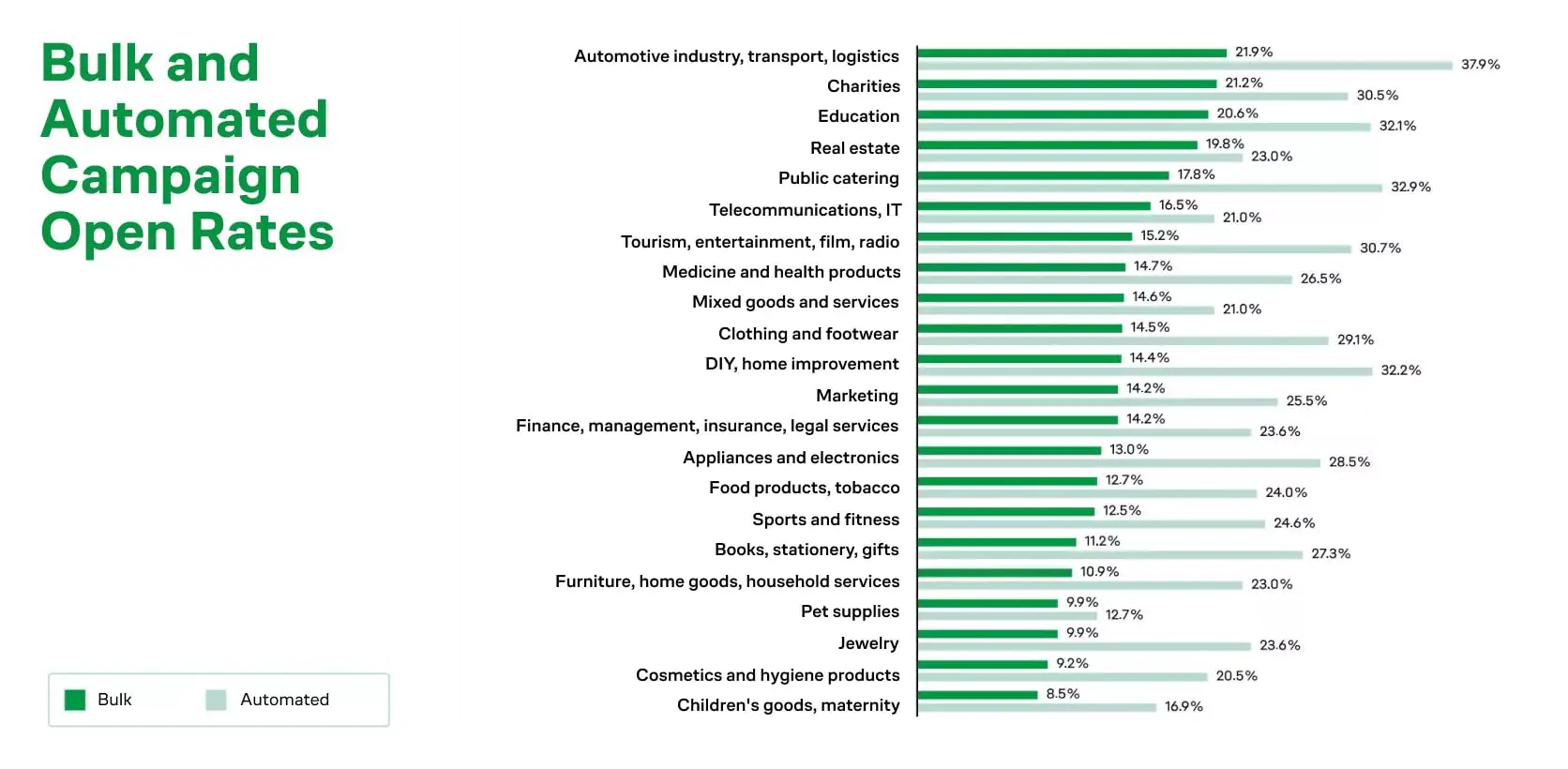
The open rate of automated communications across all industries is noticeably higher than the open rate of bulk campaigns because they are sent to very specific target audience segments at opportune moments. Data compiled from Maestra’s 2021 email campaign study
Four Approaches to Audience Segmentation
There are lots of approaches when it comes to dividing your customer database — from using basic attributes such as gender and age to refining segments using methodologies such as RFM (Recency, Frequency, Monetary value) analysis to enhance precision.
Some of the most common segmentation approaches include:
1. Using Customer Characteristics
This type of segmentation divides the audience based on attributes like:
- Gender: Essential for businesses like clothing stores where it’s important that women receive offers for women’s apparel and men for men’s apparel.
- Age: Different age groups may have varying preferences for communication methods and types of offers. A beauty products retailer, for instance, could customize skincare advice and offers according to the age group of the recipient.
- Geographic Location: Marketing a sale in a local store in one city won’t appeal to customers living in another.
The criteria chosen for segmentation largely depend on the business’s specific needs and can be highly varied:
- Clothing retailers might segment by customer size.
- Sports retailers could segment by preferred sports.
- Pet shops might differentiate customers based on the type of pet they own.
- Children’s goods retailers could segment by the number of children the customer has, their age, and gender.
An example of this type of audience segmentation in practice comes from children’s goods store Nills, which customizes its offerings based on the age of the children. Parents of infants and children up to three years old receive offers for products like baby night lights, nursery mobiles and baby development toys, while parents of children aged four and older receive offers for items designed for older kids — such as scooters, roller blades and bikes.
2. Using Customer Lifecycle Stages
Customers can be categorized according to where they stand in the purchase cycle, which allows for targeted marketing interventions at each stage. Here’s how you a basic way categorize them:
Newcomers
These customers are new to your brand and have not yet made any purchases. They can be segmented using conditions like:
- Individuals who subscribed on your website or mobile app X days ago but have not yet made a purchase.
- Those who filled out a physical questionnaire (with their contact details) in-store X days ago but have not engaged online.
The goal here is to convert this audience into making their first purchase.
Engaged customers
This segment refers to customers who have had purchases in the past, but may sometimes need additional incentives to complete orders. Segmentation criteria could include the following:
- Visitors who browsed products online but didn’t add any to their shopping cart.
- Shoppers who added items to their cart but stopped short of completing the purchase.
The goal for this segment is to maintain their loyalty and motivate them to finalize their purchases, thus converting their interest and engagement into sales.
Potential churn
This segment includes customers who may be losing interest in your brand and can be defined using the following criteria:
- Customers who have made only one purchase in the past and have not returned for more.
- Those who used to be loyal customers but have become inactive, with no purchases for the past X months.
The goal here is to reignite these customers’ interest and get them back on your website/ mobile app.
Household appliance brand, Tefal, exemplifies effective lifecycle stage segmentation by using tailored communication strategies for each stage of the customer journey. For newcomers and active shoppers, they foster purchasing incentives, while re-engagement strategies are employed to draw back customers who are showing signs of lapsing:
Lifecycle stage
Campaign
Newcomers
Welcome email series
Active browsers, no orders
Abandoned cart
Abandoned product browse
Abandoned category browse from different devices
Abandoned product browse
Abandoned category browse from different devices
Engaged customers, with at least 1 order
NPS survey
Review request
Product recommendations based on NBA (Next Best Action) machine learning algorithm
Review request
Product recommendations based on NBA (Next Best Action) machine learning algorithm
Churn with at least 1 order
Pre-churn re-engagement
Churn re-engagement
Churn re-engagement
Churn, no orders
Re-engagement with survey
Post-survey promo code
Post-survey promo code
All stages
Birthday campaign
Re-engagement for those who have stopped opening campaigns
Re-engagement for those who have stopped opening campaigns
Tefal’s customer life cycle segmentation and the corresponding communication strategies for each segment
Haircare and accessory brand, PuffCuff, utilized a similar segmentation strategy when it came to the optimization of their campaigns:
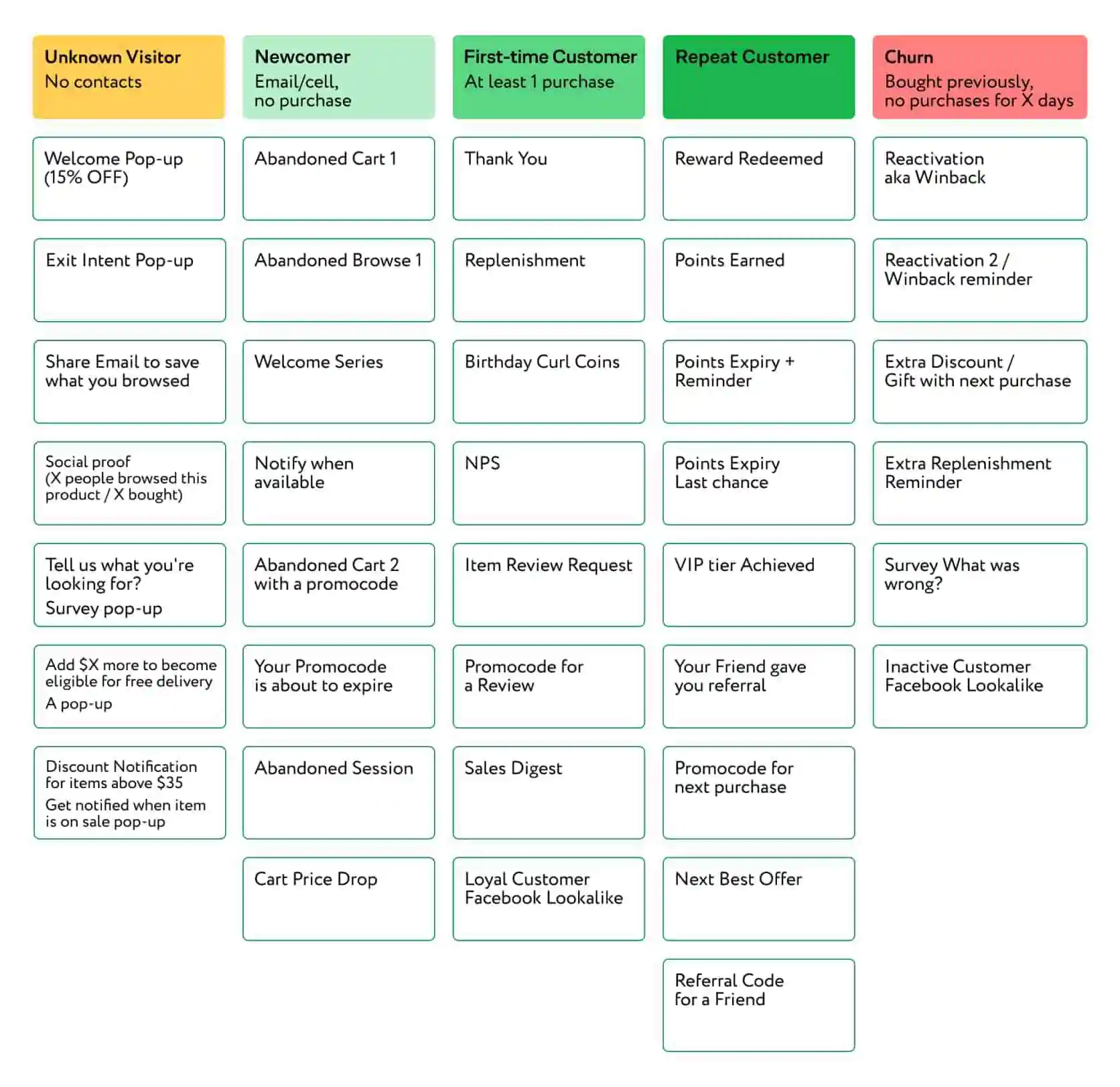
PuffCuff’s comprehensive communication strategy that covers a range marketing touchpoints with each customer
3. Using RFM Analysis
In RFM (Recency, Frenquency, Monetary Value) analysis, customer databases are segmented according to three key metrics: recency (how recent the last purchase was), frequency (how often purchases are made), and monetary value (the total amount the customer has spent).
Depending on your business size, you can use different scales for this analysis. For the sake of simplicity, we’ve used a 1-3 scale below to demonstrate how customers can be scored for each attribute:
Purchase Recency
Purchase Frequency
Monetary Total
1 — Most Recent
1 — Most Frequent
1 — Highest Spend
2 — Average Recency
2 — Average Frequency
2 — Average Spend
3 — Least Recent
3 — Least Frequent
3 — Lowest Spend
After the ratings are assigned, customers are grouped by combining scores across all three metrics. For instance, a score of 111 indicates the most devoted segment — customers who have recently made purchases, do so regularly, and contribute significantly to the company’s revenue. These customers usually don’t require discounts as they are likely to purchase again without extra incentives. On the other hand, the 311 segment represents customers who used to purchase often and spend a lot but haven’t made recent purchases. This segment could be re-engaged with special offers.
4. Using Behavioral Characteristics
Behavioral segmentation is based on how customers interact with your product and can include actions such as:
- Website visits: Where the visitor came from, which pages were browsed, and how much time was spent on each page.
- Interaction with products: Which products were viewed, added to favorites, or placed in the cart.
- Engagement with the brand: Which campaigns were opened, when, and whether the links within them were clicked.
- Purchasing patterns: Recording the types of products purchased, order frequency, and total amount spent.
Companies use behavioral segmentation to increase the likelihood of a purchase by targeting the specific interests of a customer and sending timely, relevant communications.
For sports retailer Decathlon, it’s important to identify customers regularly involved in specific sports like rock climbing, equestrianism, hunting, or fishing. These customers are identified through their purchase history to send them thematic newsletters, leading to high engagement and repeat purchases.
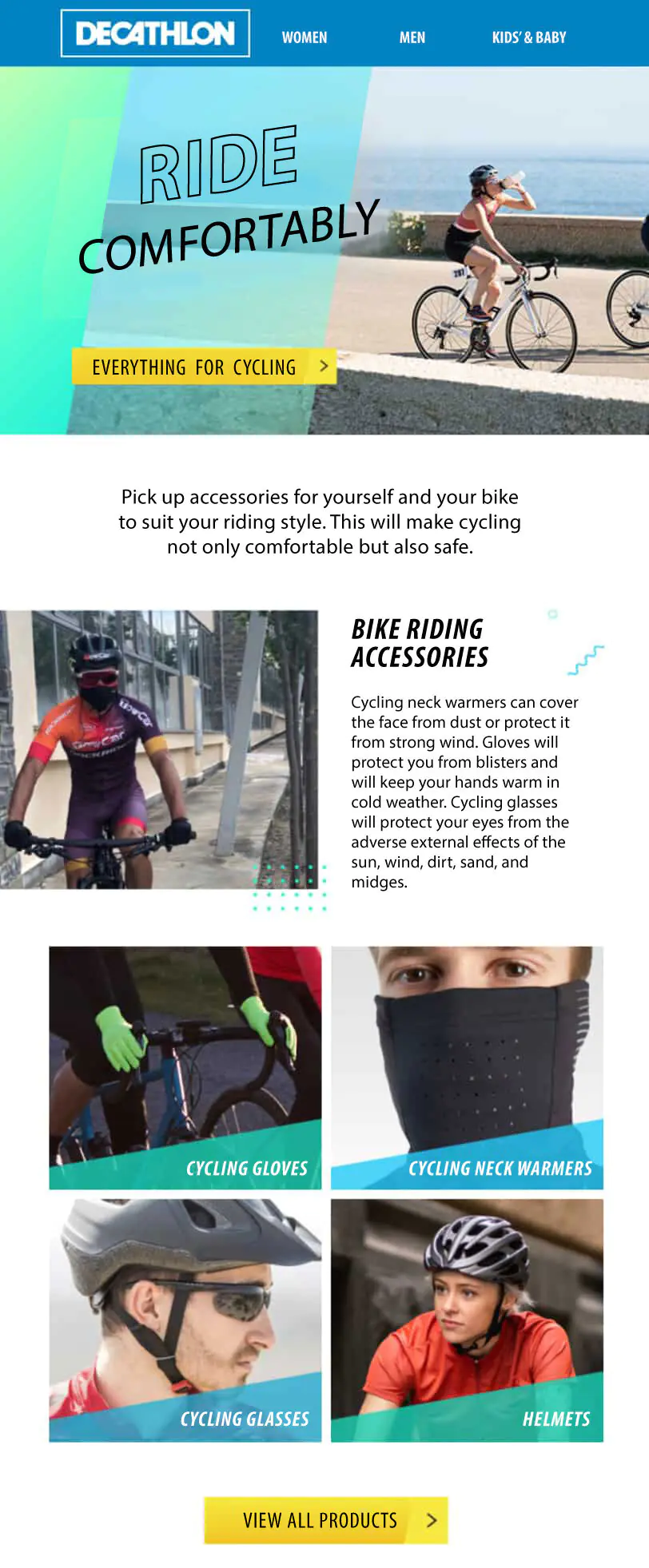
An example of a campaign sent to customers who are interested in cycling
Segmentation based on the customer’s preferred purchasing channel is another frequent strategy. Understanding whether customers prefer in-store or online shopping allows companies to tailor their marketing efforts to suit individual preferences, ensuring customers are engaged through their preferred purchasing channel.
There are also scenarios where businesses might aim to broaden customer experiences by encouraging them to explore other channels. If a segment of customers prefers in-store shopping, a company looking to boost online sales might incentivize these customers to try placing an order through their online store. For instance, Tom Tailor provided a discount for customers making their first purchase on the brand’s website:
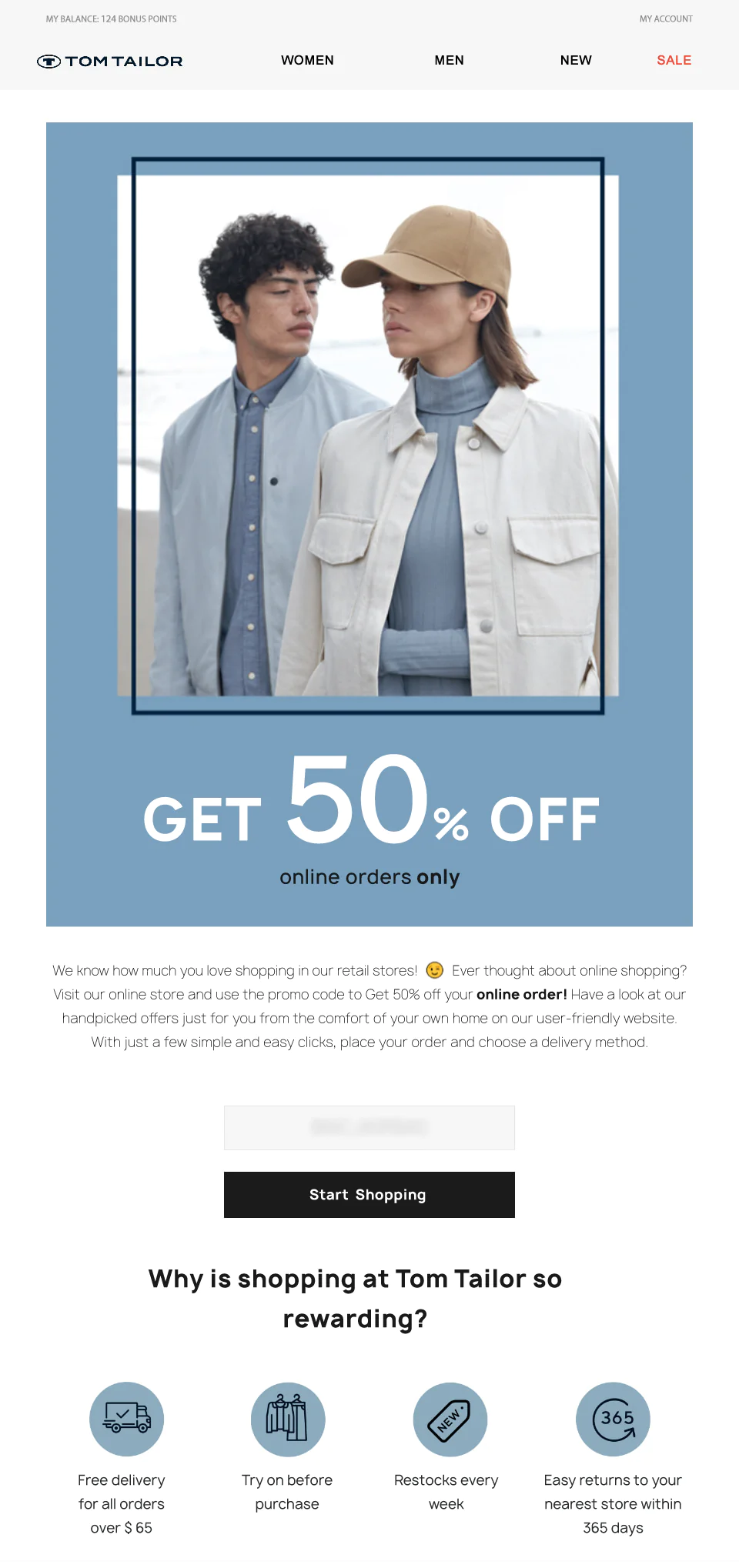
A 50% discount was used to incentivize this segment of Tom Tailor’s customer base to make their first online order
When businesses have access to machine learning algorithms, behavioral segmentation can become even more sophisticated. These algorithms sift through vast amounts of customer behavior data to form narrow, highly targeted audience segments for precise marketing offers.
Maestra’s client, travel company FUN&SUN, implemented this type of algorithm and tested its efficacy. They compared data on click-through rates (CTR) and click-to-open ratios (CTOR) of identical emails sent to different audience segments — one crafted by marketers and the other by the algorithm. Those generated by the algorithm outperformed in all the tests:
CTR
CTOR
Test #1
+0.3%
+7.1%
Test #2
+1.19%
+7.46%
Test #3
+1.15%
+10.61%
Increased CTR and CTOR metrics in segments generated by machine learning algorithms
Tips for Implementing Audience Segmentation
Identify the Key Performance Indicator (KPI)
Before launching audience segmentation, marketing teams need to identify the main metric that will benefit from it. This is important to justify using more resources by showing tangible improvements in important metrics for your brand’s success. Ideally, set a specific target for the desired improvement in this metric.
Some common examples from Maestra’s clients include:
- Reducing email unsubscribe rates by 45%;
- Increasing email open rates by 10%;
- Enhancing conversion rates for purchases;
- Boosting the frequency of repeat orders.
Begin with Basics
For those new to database segmentation, it’s a good idea to start with the data you already possess. Most companies have access to their customers’ contact information, names, birth dates, and purchase history. Even this basic data can be a launching point for segmentation efforts. For example:
- A customer’s name can sometimes indicate their gender, allowing for gender-specific marketing campaigns. This can be particularly effective for fashion retailers.
- Birth dates can facilitate age-based segmentation, enabling cosmetics retailers to offer age-appropriate product suggestions. Some companies get creative, segmenting by star signs and sending horoscopes to each sign.
- Geographical segmentation is also common — retailers with multiple store locations can personalize communications on local store events or delivery options.
- Purchase history insights can inform recommendations for repeat purchases or complementary products.
Maestra’s client Beethoven, for instance, segments its customers by pet type, tailoring communications to cater to the needs of cat, dog, bird, rodent, or fish owners:
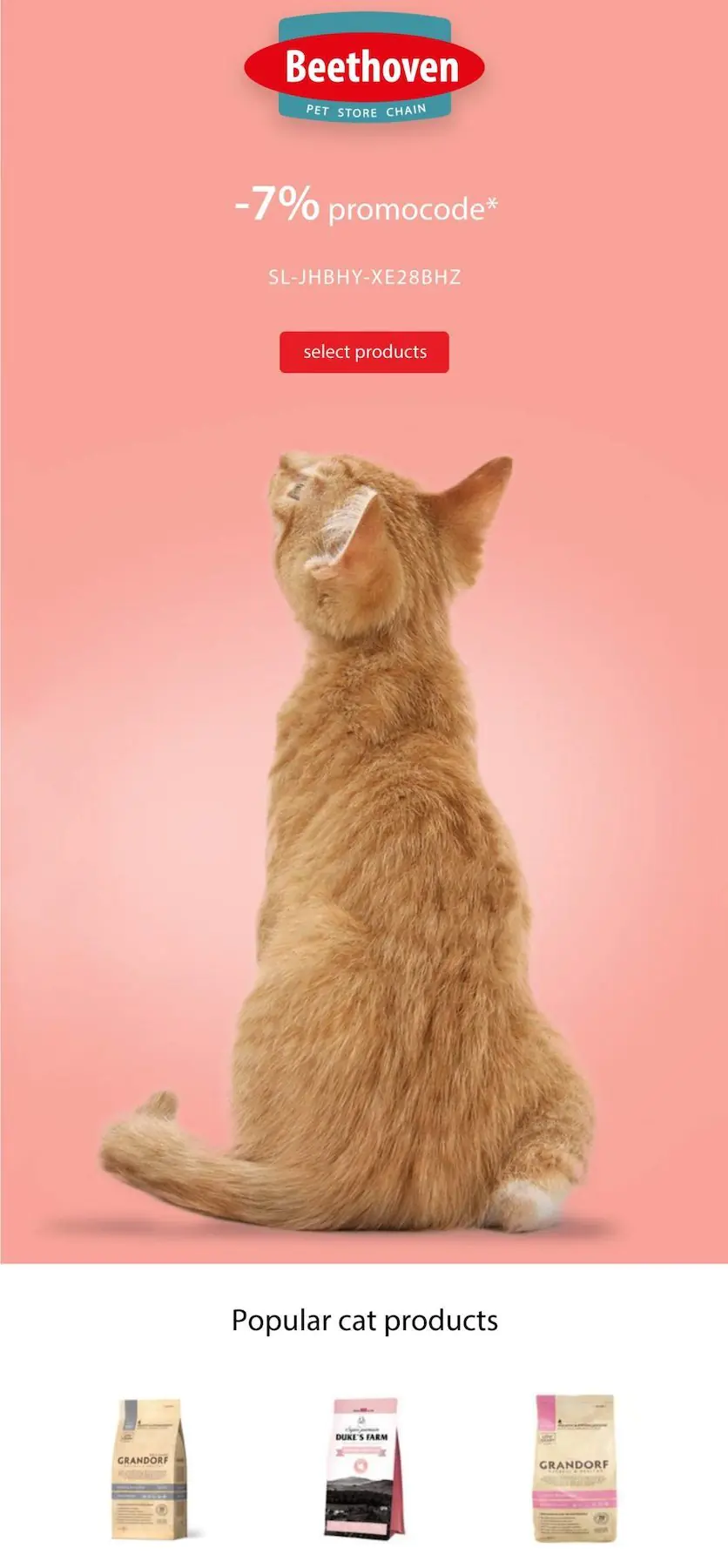
This campaign with a discount can only be received by customers who own cats
Evaluate the Results
Use A/B testing to gauge the effectiveness of personalized versus generic messaging. For instance, in testing gender-based segmentation, one group could receive a standard newsletter, while another gets one tailored with gender-specific banners and product recommendations. The success of each approach can be measured by comparing their performance (such as click rates, conversion rates, and total revenue), ensuring statistical significance in the results.
Collect Additional Data
For more refined segmentation in the future, it’s important to lay the groundwork for collecting more detailed customer data and behavioral insights. For example, while a pet store might initially only record the type of pet a customer owns, gathering additional details like the pet’s age, breed, and dietary preferences can enable more nuanced segmentation. Another example from Maestra’s client German Kabirski is their customer profile enrichment. The brand collects additional data — customers’ dates of birth — using an email and pop-up:
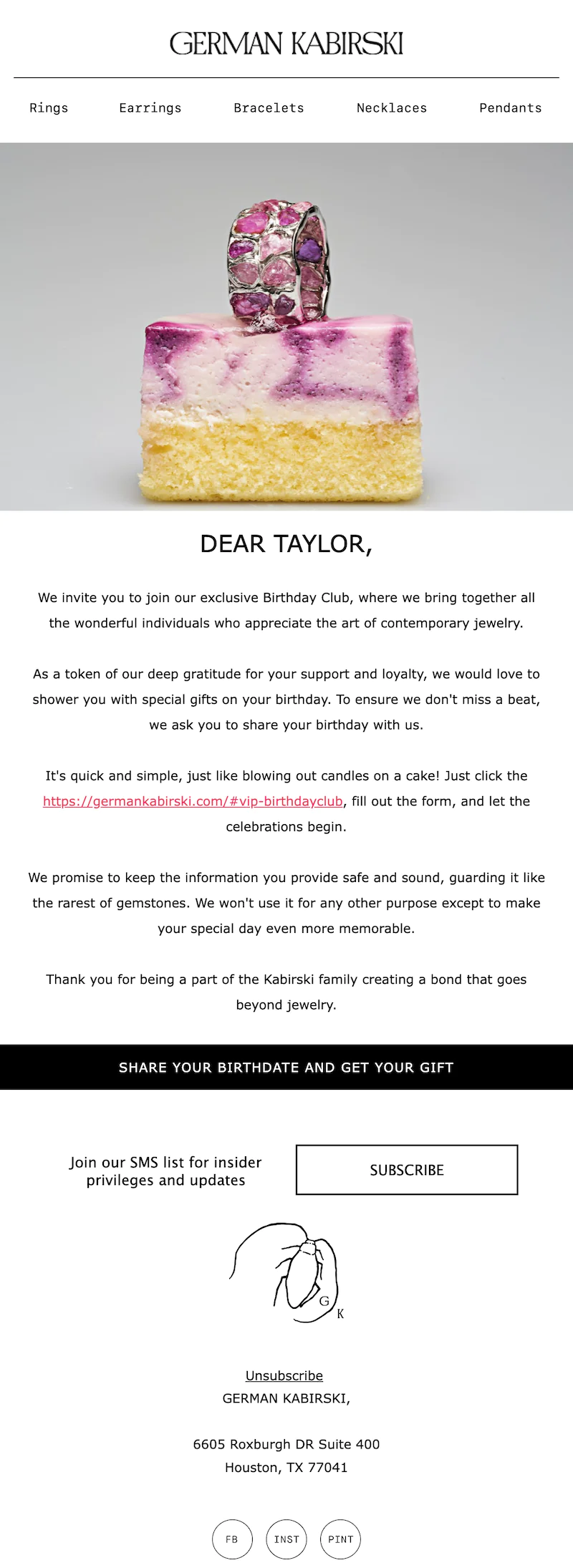
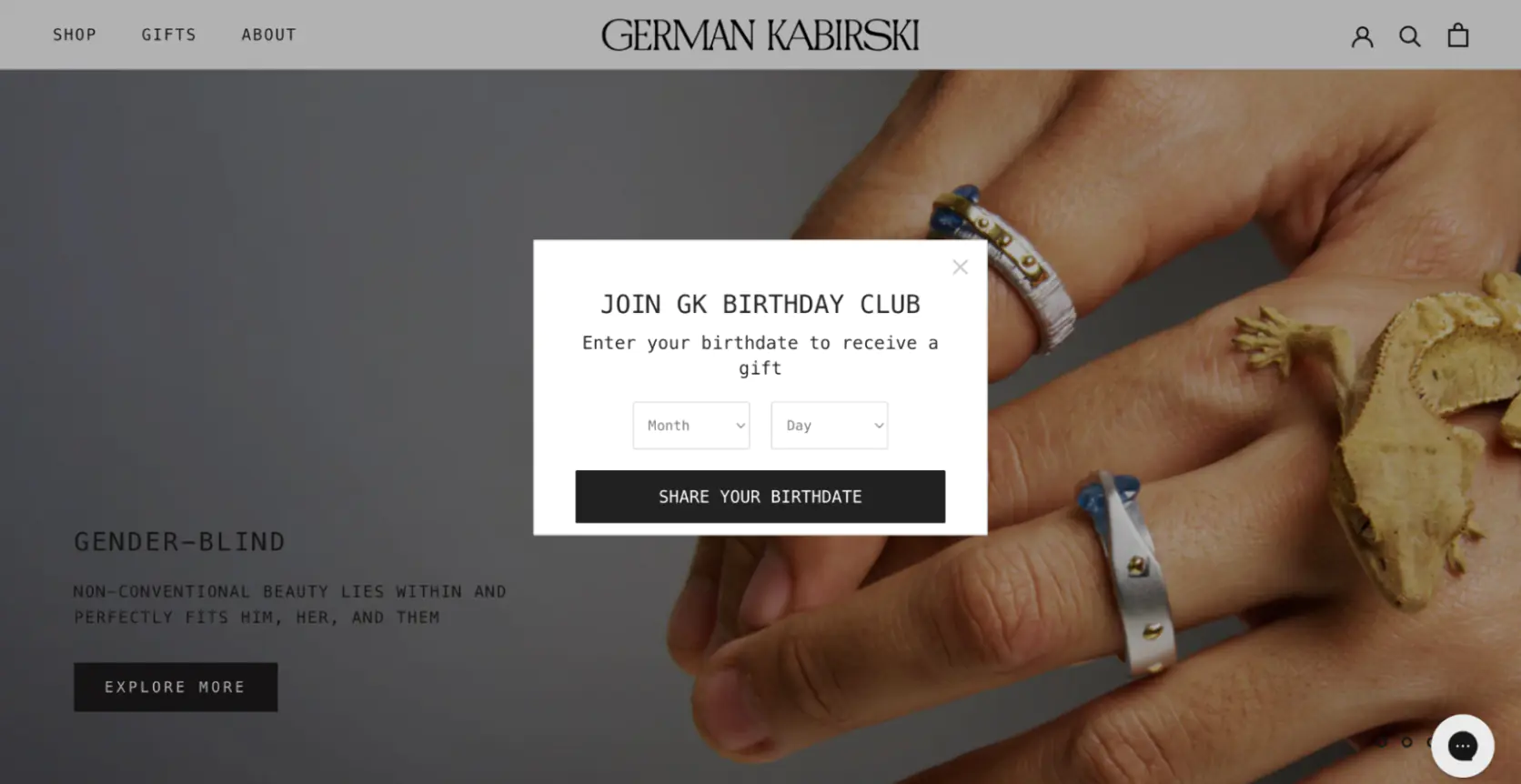
The email campaign directs customers to the website where they can fill in their birthday in a pop-up
Similarly, while initial data collection efforts may focus on purchase history, expanding to track website interactions, favorites, and cart additions can provide deeper insights for segmentation.
Identifying which data will be most valuable and discussing collection methods with your IT team is crucial. Tools such as CRM (Customer Relationship Management) or CDPs (Customer Data Platforms) like Maestra are typically utilized to facilitate this process.
Expand Segmentation Applications
Finally, consider using your segments in tools like Facebook Ads for even more impact — such as attracting new customers. PuffCuff, for example, uses data stored in Maestra to create a special segment with customers who have recently visited the website, placed orders, and engaged with email campaigns over the last month. This segment is used in Facebook Ad Manager (where it is updated automatically) to find similar audiences for targeting.
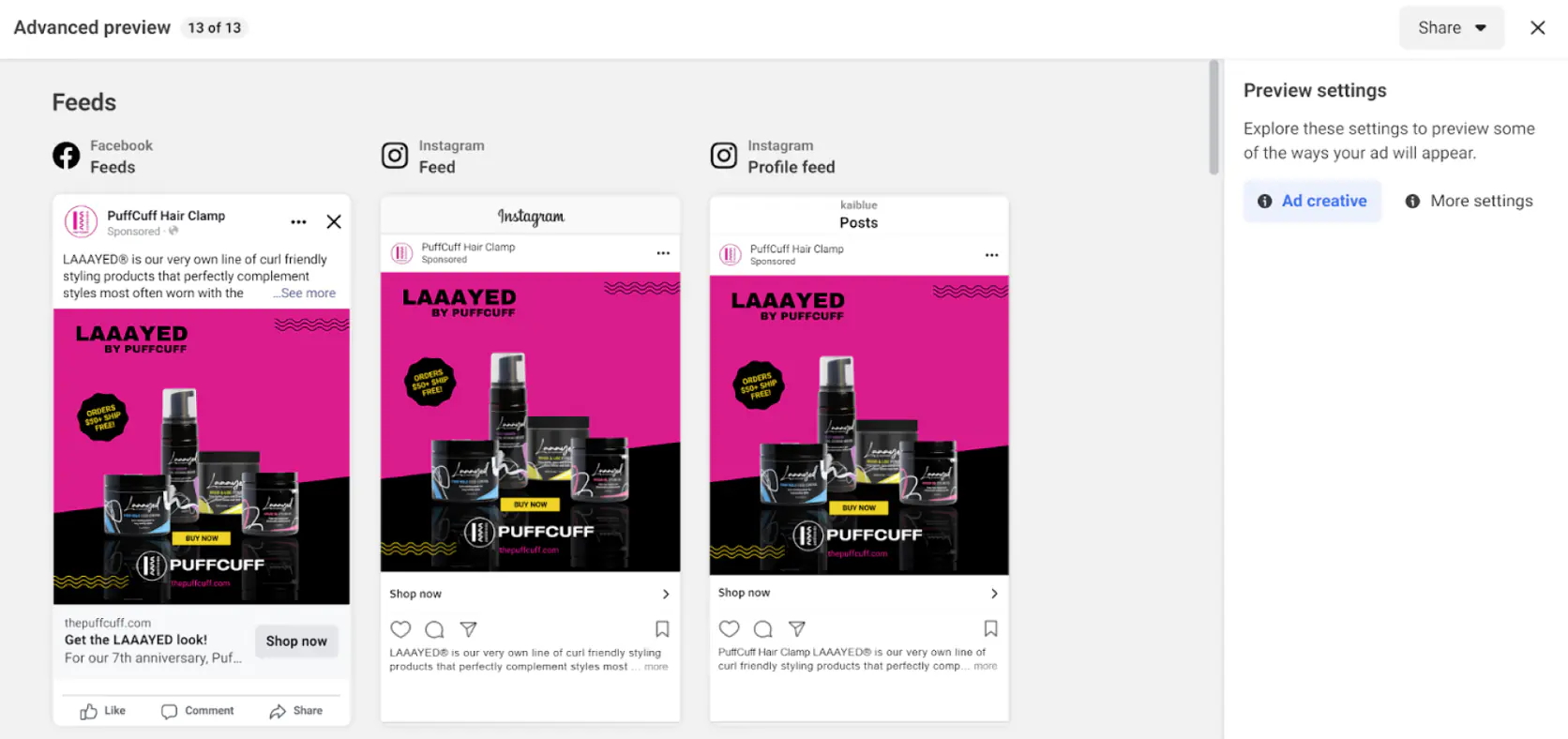
PuffCuff’s ads for a LaL audience based on an existing segment
Final Thoughts
To sum up, audience segmentation strategies are crucial for enhancing marketing effectiveness, personalizing customer experiences, and boosting revenue. Segmentation encompasses a variety of approaches, ranging from methods that utilize basic data like age and purchase history, to more sophisticated approaches like RFM analysis, and extending to advanced techniques that incorporate data science and machine learning for even more precision.
Ultimately, the goal of segmentation is to gain a clearer definition of your audience and make data-driven decisions that foster stronger connections. By testing and evaluating various segmentation strategies, marketers can identify the most effective ways to engage their target audiences and achieve measurable results.



